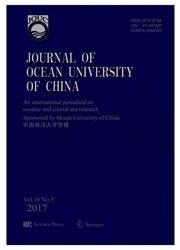

 中文摘要:
中文摘要:
The East China Sea(ECS) is a river-dominated epicontinental sea, linking the Asian continent to the northwestern Pacific via the large rivers originating from Tibetan Plateau. The relevant huge influx of riverine detritus has developed unique sedimentary systems in the ECS during the Quaternary, offering ideal terrestrial archives for reconstructing Quaternary paleoenvironmental changes and studying land-sea interactions. Overall, two characteristic river systems dominate the sedimentary systems and sediment source to sink transport patterns in the ECS, represented by the Changjiang(Yangtze River) and Huanghe(Yellow River) for the large river system and Taiwan rivers for the small river system. Given this, the sediments derived from both river systems bear distinct features in terms of parent rock lithology, provenance weathering and sediment transport. Previous studies mostly focus on either the ‘source’ discrimination or the ‘sink’ records of the sedimentary system in the ECS, while the source to sink process linking the land and sea, in particular its time scale, has been poorly understood. Here we introduce a newly-developed dating technique, the ‘comminution age’ method, which offers a quantitative constraint on the time scale of sediment transfer from its ultimate source to the final depositional sink. This novel method is of great significance for improving our understanding on the earth surface processes including tectonic-climate driven weathering, and sediment recycling in relation to landscape evolution and marine environmental changes. The application of comminution age method in the ECS will provide important constraints on sediment source-to-sink process and more evidences for the construction of late Quaternary paleoenvironmental changes under these unique sedimentary systems.更多还原
 英文摘要:
英文摘要:
The East China Sea (ECS) is a river-dominated epicontinental sea, linking the Asian continent to the northwestern Pa- cific via the large rivers originating from Tibetan Plateau. The relevant huge influx of riverine detritus has developed unique sedi- mentary systems in the ECS during the Quaternary, offering ideal terrestrial archives for reconstructing Quaternary paleoenviron- mental changes and studying land-sea interactions. Overall, two characteristic river systems dominate the sedimentary systems and sediment source to sink transport patterns in the ECS, represented by the Changjiang (Yangtze River) and Huanghe (Yellow River) for the large river system and Taiwan rivers for the small river system. Given this, the sediments derived from both river systems bear distinct features in terms of parent rock lithology, provenance weathering and sediment transport. Previous studies mostly focus on either the 'source' discrimination or the 'sink' records of the sedimentary system in the ECS, while the source to sink process linking the land and sea, in particular its time scale, has been poorly understood. Here we introduce a newly-developed dating technique, the 'comminution age' method, which offers a quantitative constraint on the time scale of sediment transfer from its ultimate source to the final depositional sink. This novel method is of great significance for improving our understanding on the earth surface processes including tectonic-climate driven weathering, and sediment recycling in relation to landscape evolution and marine environmental changes. The application of comminution age method in the ECS will provide important constraints on sediment source-to-sink process and more evidences for the construction of late Quaternary paleoenvironmental changes under these unique sedimentary systems.
 同期刊论文项目
同期刊论文项目
 同项目期刊论文
同项目期刊论文
 期刊信息
期刊信息
